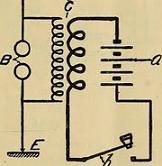 In everyday language, the idea of mode of action refers to the way in which a process develops or an act is carried out . The concept refers to the characteristics or qualities of a functioning or a methodology.
In everyday language, the idea of mode of action refers to the way in which a process develops or an act is carried out . The concept refers to the characteristics or qualities of a functioning or a methodology.
For example: “Experts suggest farmers use pesticides with different modes of action to maximize effectiveness,” “The kids listened carefully as the teacher explained the different modes of action of the instruments,” “I still don't understand the mode.” action of this machine , but I'll learn."
The mode of action of a toxic substance , in this framework, refers to the signs that appear in an organism as a result of contact with it. Underlying the mode of action is a mechanism of action , linked to the chemical reactions generated.
A toxicant with a specific mode of action inhibits or alters certain biological processes through its binding to certain molecules . When the substance causes widespread damage that produces necrosis, it is referred to as a non-specific mode of action .
Classifying insecticides and acaricides according to their mode of action (whose acronym is MdA ) is very useful for producers, farmers, professionals and technicians who must face the endless task of protecting crops from destructive species. This is a guide that you can access to complement your insecticide resistance management ( IRM ) strategy in a sustainable and effective way.
Resistance to an insecticide or acaricide can be understood as a change in sensitivity that members of a given population inherit. This concept is framed in the so-called pests , which very often cause the products designed especially for their elimination to stop working, with the consequent decrease in the control levels promised by the recommendations for use present on the packaging and labels.
The appropriate mode of action is achieved not only by using the appropriate product, but also by respecting the rest of the instructions , such as the quantity and frequency of its application. In fact, it is often the abuse of a certain insecticide that is the cause of a situation of resistance on the part of certain individuals of a species, which advances through evolution until it reaches an entire population.
 In the field of music , the mode of action refers to the ways of acting on an instrument to make it sound. Blowing, hitting, pulsing, rubbing or shaking are some of these modes of action.
In the field of music , the mode of action refers to the ways of acting on an instrument to make it sound. Blowing, hitting, pulsing, rubbing or shaking are some of these modes of action.
Typically, each instrument has only one mode of action, but this is not always the case. Some can be operated in more than one way, as is the case with the violin, a special case in which the concept of mediator also enters, an element that acts directly on the vibrating material of an instrument. In other words, certain instruments require the use of an object to produce the sound; such is the case of the drum sticks, the guitar plectrum, the violin bow and the mouthpiece of various wind instruments.
Returning to the special case of the violin , in its official academic classification it is considered a string instrument (this is the family to which it belongs) and its mode of action is bowed string . To execute it it is necessary to use the mediator known as an arc ; However, in many works there are passages in which the hand must be used directly on the strings, as is done with the guitar, an instrument whose mode of action is a plucked string .
Grammar , finally, also uses the notion of mode of action, as indicated by the Royal Spanish Academy ( RAE ) in its dictionary. In this case, the mode of action is an aspect that has a lexical manifestation.
